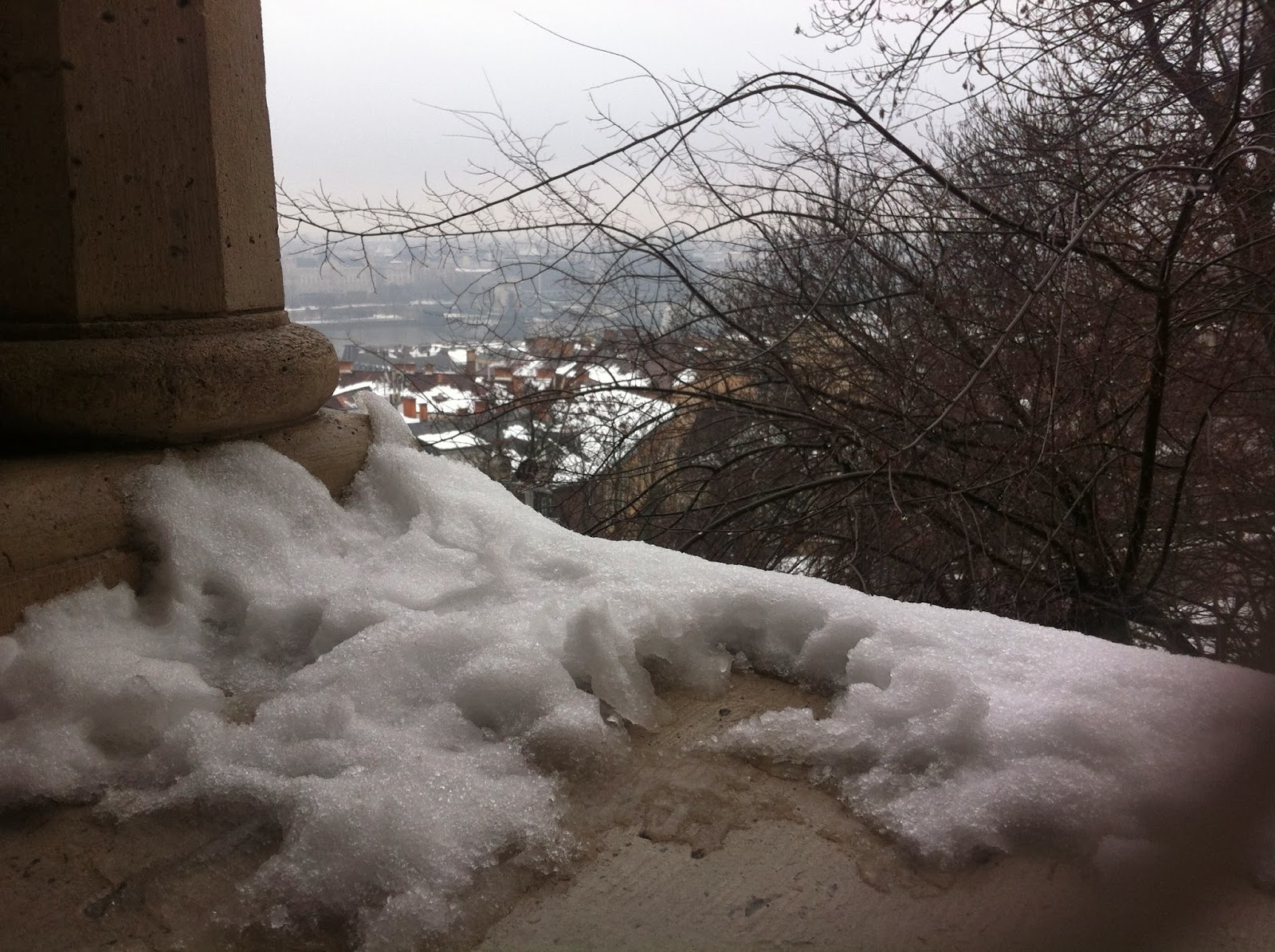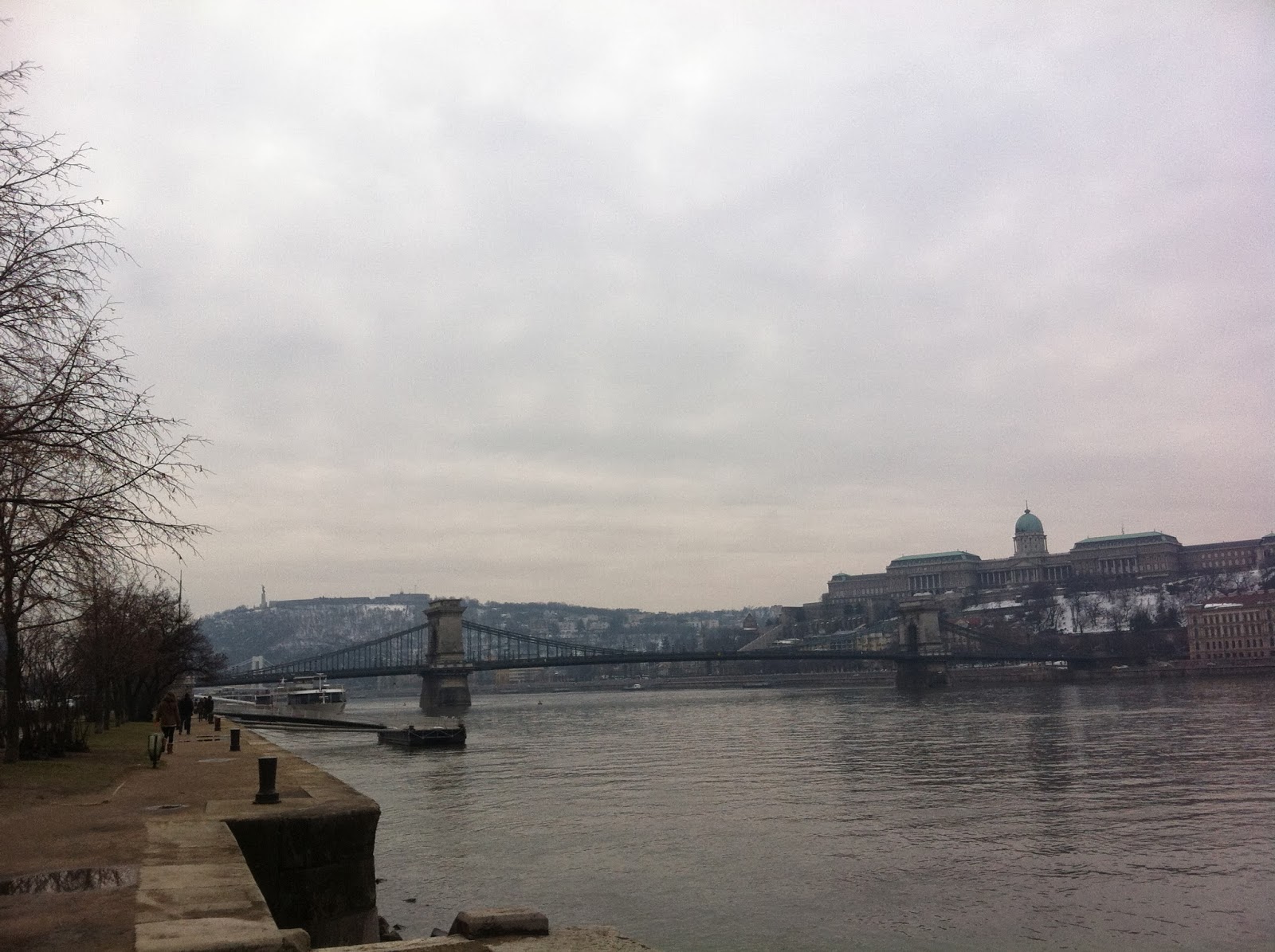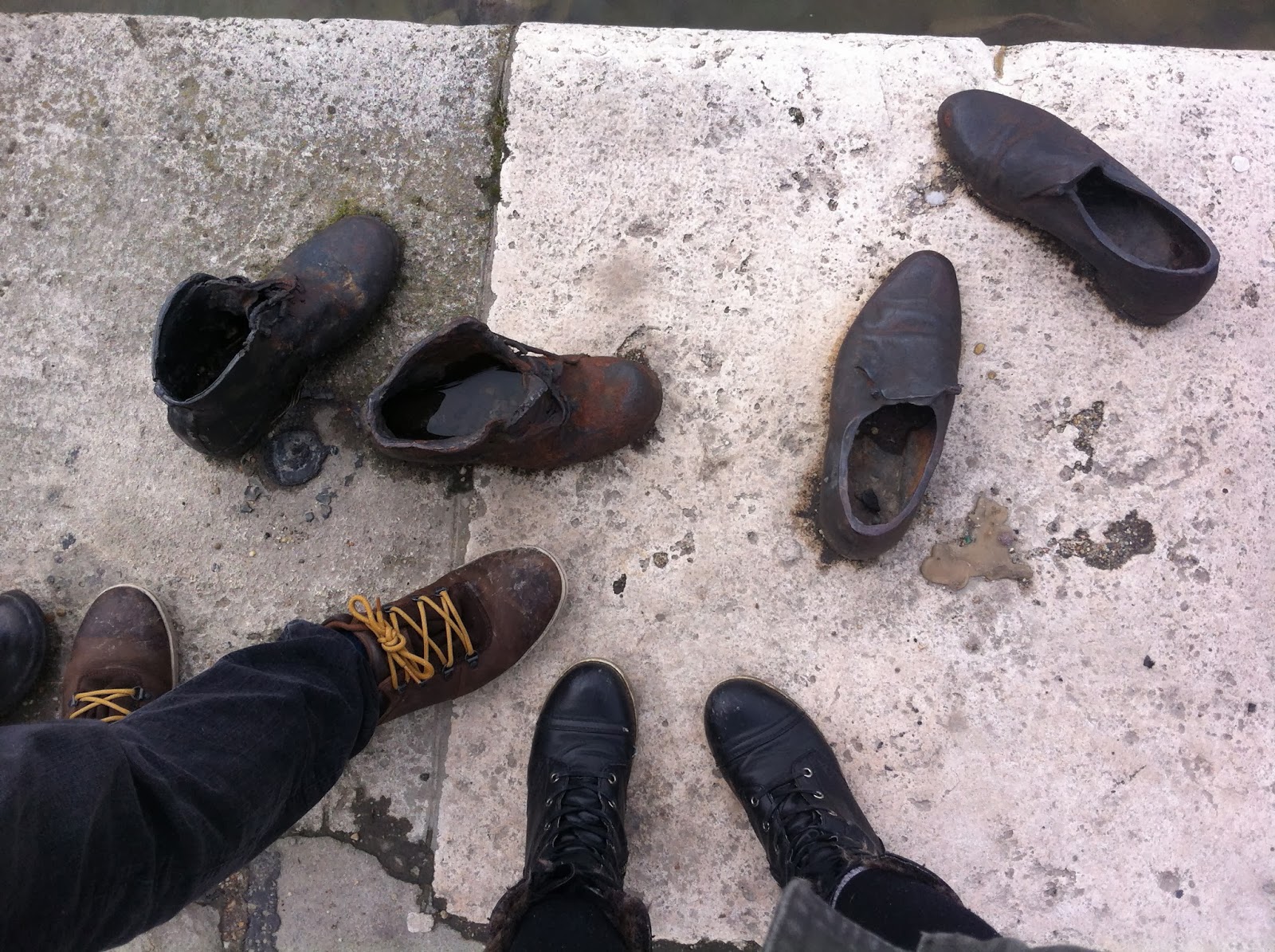'Sup from the Danube on top the Széchenyi Chain bridge - the only thought I had standing on the bridge: I AM FREEZING. And boy can I remember that very moment, because I was cold and wet from the rain and hungry from burning off my breakfast to keep warm in winter. Good times nonetheless I daresay :}
The chain bridge spans across the Danube river, which is the main river that flows through the heart of Budapest. It is the first permanent suspension bridge that connected the two sides of Pest and Buda, and was established in the 19th century by William Clark, making it the oldest bridge on the Danube. While my pictures don't do it justice (recap: my camera had issues so I had to send it for repair, so I was using an old iPhone 4 for pictures....but on hindsight it really captured some of the winter gloom), the bridge was cast in iron and constructed with balance and dignity. It later went on to be a political symbol of the link between the West and East of the country. From here, you get a glimpse of the city's skyline and how different the two side are.
In operation since the early 1800s, the trams in Budapest are extensively established and I love how it adds that rustic charm to the city and an element of the past against the modern buildings by the bank.
We adjourned for an early lunch at Marvelosa restaurant at 1013 Budapest, Lánchíd utca 13, the cold really spurs on those hunger pangs! The interior was really homely, coupled with lace details beneath the glass tabletops and cosy wooden chairs. We tried the Hungarian pasta, as recommended by the waiter - the dish was really filling, but we didn't really fancy the bland texture of the pasta and the extra rich creaminess. The pancetta toppings was nice though.
Without a doubt, the Fisherman's Bastion was a place worth checking out despite the ascend, as it exudes the essence of Budapest architecture and history. The lookout towers have been revamped to signify the actualy fortification in Buda in the 19th century, where they used them as vantage points. Now, they serve as gems for panoramic views of the city. It is open all year round, and the towers' 7 turrets represents the 7 Hungarian tribes who founded the present day Budapest a long way back in the year 895! The red brick wall interior and patterned beams were distinctively different from the gothic architecture from Central and Western Europe, and the white blanket of snow over the bastion enveloped it in warm dreaminess.
The place is a gem to explore, and we would definitely have loved to wander about more if it wasn't so cold!
Housed within the bastion was the Szabo Marzipan Museum - we didn't enter the museum as there was a token fee and we weren't that interested. There was a mini shop at the entrance though, and that was sufficient to satisfy our piqued interest. Got some marzipan sweets to share, and they had seats for resting so we took the opportunity for a sweet break (pun intended).
Much to our delight, we got yet another recommendation from one of R's close friends, E. Ruszwurm is a lovely old-fashioned parlour that serves pastries and ice cream since 1827, and exudes a quaint vibe even with the throngs of tourists and locals alike. It's located close to the bastion at 1014 Budapest, Szentháromság utca 7, so you can't miss it if you're walking out from the exit.
The parlour is spread over 2 sections, and also offers al fresco seating by the door. The place was clearly popular with the locals, as many came in to make takeaway orders. We sat by the cash register, at the wooden cabinets with their display of pastry selections, and had an almond nut cake and their signature cream cake (HUF400) along with hot cups of tea. The atmosphere and price was good, and we wanted to go back one last time before leaving Budapest!
Here's R acting like the Hunched-back of Notre dame in bid to get me to hurry finish taking snapshots of the parlour.
A hidden historical find that we stumbled across was Hospital in The Rock, which was a preserved hospital that was used extensively during the siege of Budapest during World War II, we got to see the original medical and related equipment, as well as walk through the Cold War-era nuclear bunkers. This is located at Lovas ut 4/c, Budapest 1012, and they only carry out guided historical tours of the place on an hourly basis (you can't walk through it alone). We highly recommend it!
Walked along the banks of the Danube river in search for the World War II memorial shoes, strolling by the river with R was really peaceful and definitely one of my best memories of Budapest ♥
The shoes on the Danube promenade is a World War II memorial dedicated to the Hungarian Jewish, the concept was conceived by Can Togay and sculptor Gyula Pauer and honours the Jews in Budapest during WWII. The 60 pairs of abandoned shoes by the river represent their struggle, where they were ordered to take off their shoes and shot at the edge of the banks so they fell straight into the Danube river and float away. This is found on the Pest side, and reminds us of the haunting past and how we will never be able to fit into those shoes of those who had gone through the struggles.
Shoes stained with history that we can never fit. Till part III, ciao!
Budapest part II: Shoes stained with history we can never fit
Budpest part III: Land of the Rubrik's cube





















































No comments :
Post a Comment